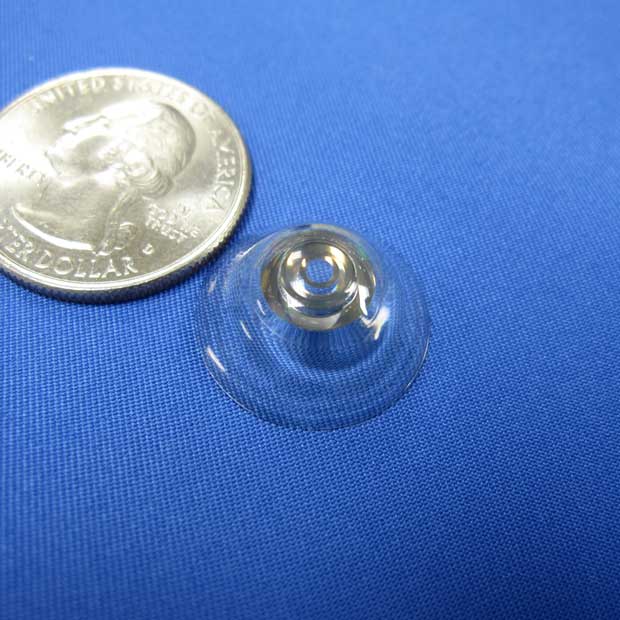 A new telescopic contact lens and complementary smart glasses that recognise winks and ignore blinks have been developed with potential applications for AMD patients.
A new telescopic contact lens and complementary smart glasses that recognise winks and ignore blinks have been developed with potential applications for AMD patients.
The device, unveiled at the AAAS annual meeting in San Jose, California this week, allowed wearers of the contact lenses to switch between normal and magnified views.
It worked by incorporating a very thin reflective telescope inside a 1.55mm lens. Small mirrors within bounce light around, expanding the perceived size of objects and magnifying the view.
Eric Tremblay, who led research at Ecole polytechnique fédérale de Lausanne in Switzerland, said: ‘We think these lenses hold a lot of promise for low vision and age-related macular degeneration. It's very important and hard to strike a balance between function and the social costs of wearing any kind of bulky visual device.
Register now to continue reading
Thank you for visiting Optician Online. Register now to access up to 10 news and opinion articles a month.
Register
Already have an account? Sign in here
